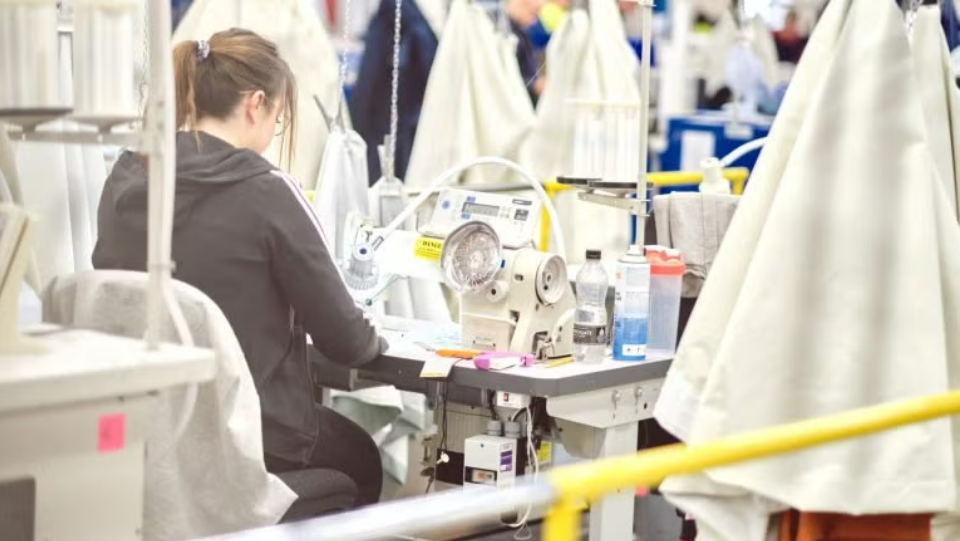The steps to making UK fashion onshoring a reality

THE STEPS TO MAKING UK FASHION ONSHORING A REALITY
A UK Fashion and Textile Association (UKFT) report suggests there is “much promise” for the UK's future sourcing and circularity scene, particularly as fashion brands and retailers find themselves coming up against greater macroeconomic pressures.
The report says it is unlikely fashion brands and retailers will abandon global supply chains wholesale but they do see the UK as a crucial part of a resilient, sustainable supply network – one that can quickly adapt to trends, reduce waste, and meet new ethical standards.
“The UK will play an important role in a matrix of far, near and onshore sourcing strategy. By addressing current challenges, UK operations can evolve from a niche, ad-hoc solution into a strategic pillar of fashion sourcing in the years ahead,” reads the report.
Of course, there are challenges, including higher costs and scale constraints, a lack of infrastructure for textile recycling and trust damage resulting from previous labour compliance issues in UK factories.
But with an increasingly challenging geopolitical backdrop, the report says supply chains need to become more agile and onshoring is a key element to making that happen.
There are also opportunities to develop transparency, traceability and verification tools with QR, blockchain, AI and RFID and assure world-class labour standards “turning past challenges into a selling point”.
Here are the key recommendations the report makes for industry stakeholders.
For brands: Continue using UK suppliers for agility and invest in those relationships.
- Consider partnering with UK factories on automation or training programmes to help them reduce costs – this will pay off in the long run if you can shift more production onshore. Also, actively engage in policy discussions (Groceries Code Adjudicator, Extended Producer Responsibility) and collaborate in setting up take-back and recycling schemes ahead of regulations; being a first mover in circularity could become a competitive advantage.
For UK garment manufacturers: Focus on your strengths (speed, quality, craftsmanship, transparency) and communicate them.
- Work on scaling sustainably – maybe form cooperatives or networks to offer greater capacity together. Show brands you are ready for their “test and repeat” and can also handle larger orders when needed. Improving cost efficiency is key: explore lean manufacturing and new tech to bring quotes closer to offshore prices for basics. And since sustainability is the future, invest in capabilities like using recycled yarns, renewable energy, and providing detailed audit data – these will attract more business as brands prepare for CSRD and seek low-carbon suppliers.
For policymakers and industry bodies: There’s a mandate from brands for better recycling infrastructure and enforcement of labour standards.
- Innovation and infrastructure investment is required in building the “missing links in the circular chain”. However this is only a small section of the circle, namely recycling plants, spinning and weaving if we can maintain our knitting, finishing, dying, CMT and printing businesses.
- Transparency and traceability is required both deeper upstream into Tier 2, Tier 3 etc. and onwards downstream to account for retailer excess stock and post-consumer waste. This will ensure trust for both the brands and the consumers.
- Immutable data to verify both raw fibre origins and recycled credentials and DPP required. QR, Blockchain, AI as well as garment and label verification required.
- Systems: new AI/blockchain system (e.g. Galaxius/Ameba/ Segura) to be built to facilitate fabric and production planning, order placement etc. Objective to achieve efficiencies, capture data and reduce cost.
- Infrastructure – recycling plants (both mechanical and chemical) and spinning plants for new forms of recycled materials need investment.
- Direct EPR funds or grants to build textile recycling plants in the UK.
- Support training programmes to address any skills gap in ethical compliance and modern manufacturing. A coordinated approach can make the UK a leader in sustainable fashion production, capitalising on brands’ expressed willingness to source more locally if conditions improve.
While Bill McRaith, former chief supply chain officer at PVH and current executive advisor at Future-Proof Fabrics explained the rationale behind a matrix model that blended the benefits of onshoring, nearshoring and offshoring. He also urged collaboration, warning there is “no single retailer or manufacturer that can make this happen.”
By Just Style
